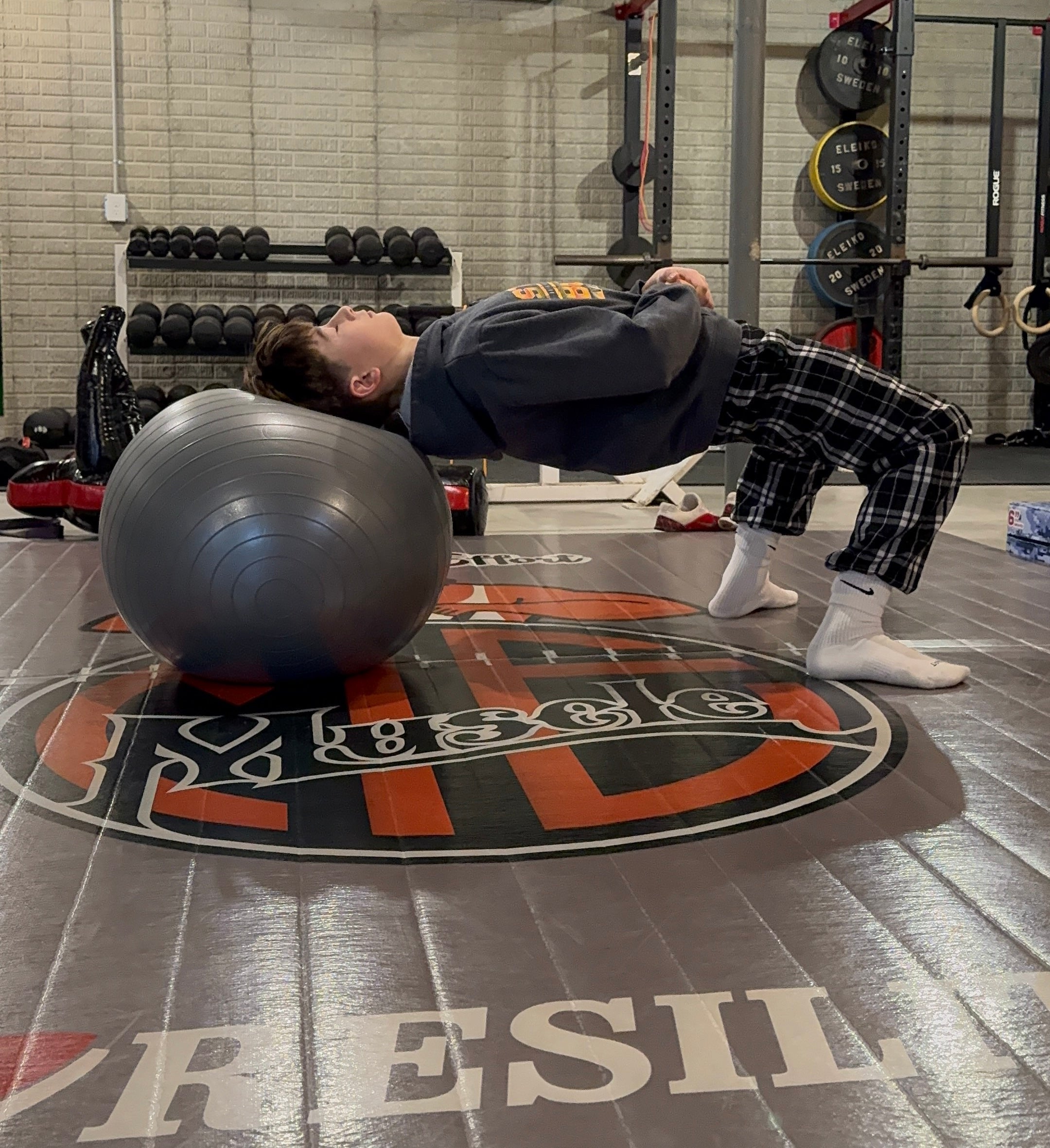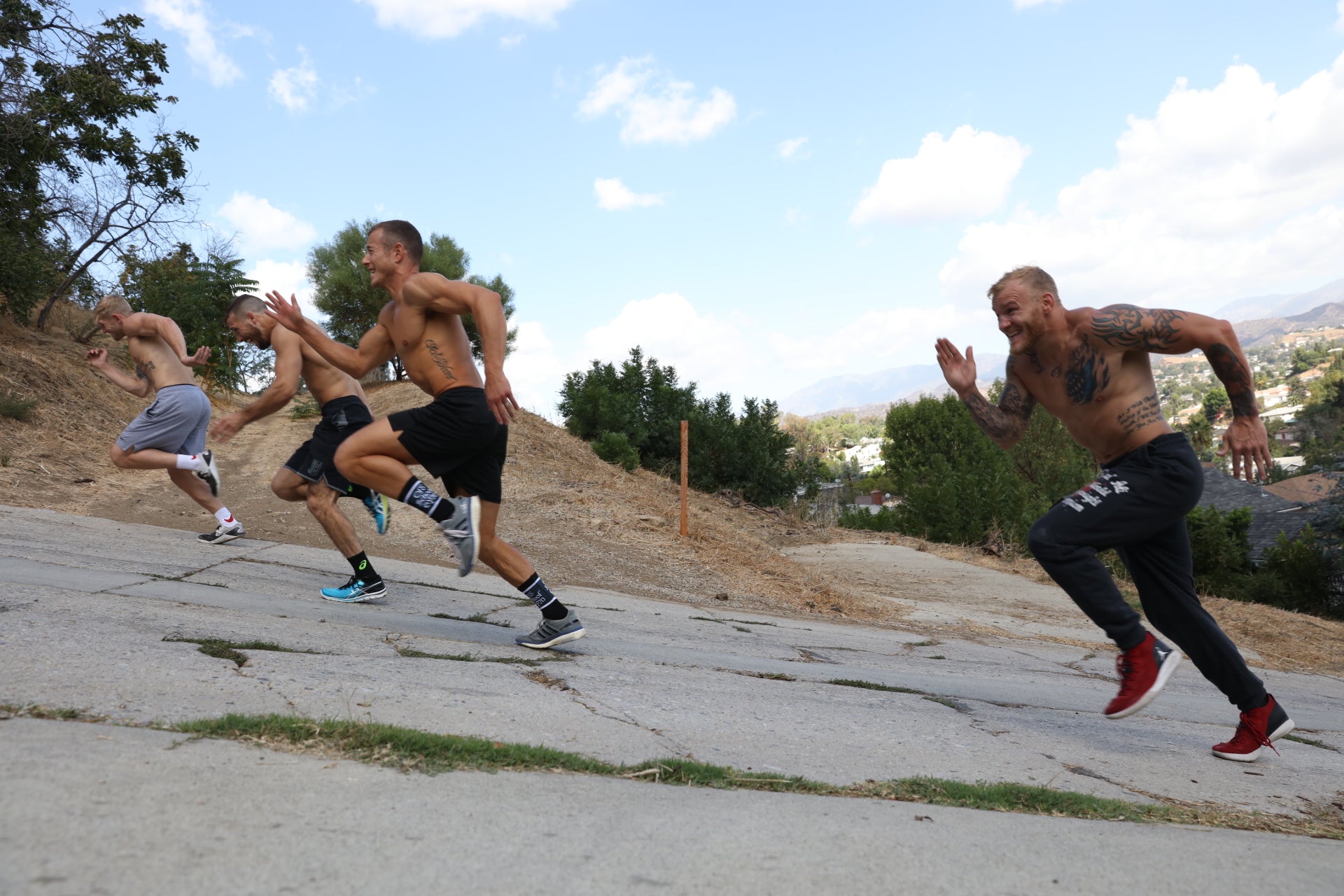Building bigger, well-defined shoulders requires the right exercises, and using a cable machine can offer unique advantages that free weights can’t match. The constant tension cables provide helps to target all three deltoid heads; front, side, and rear, helping you to create that longed-for 3D shoulder look.
Cable shoulder exercises allow for a greater range of motion and consistent resistance throughout each movement. This helps to maximize muscle fiber recruitment, which leads to better growth and definition.
The other great thing about a cable machine is you can easily adjust the angle of the cable, thanks to the improved freedom of movement. This will help you target your shoulders from multiple positions, allowing you to focus on specific deltoid heads, for example, your rear delts. This versatility makes cables perfect, whether you’re a beginner wanting to learn proper exercise form, or an advanced lifter looking to break through any plateaus.
Some of the more popular cable shoulder workouts include things like cable lateral raises, face pulls, and cable shoulder presses that target each part of your delts for a well-balanced routine. These exercises not only build muscle mass but also improve functional strength for everyday activities and other lifting movements.
Top Benefits of Cable Shoulder Exercises
Before we dive into the exercises, let’s check out some of the benefits you can enjoy if you incorporate cable workouts into your shoulder training.
Constant Muscle Tension Throughout the Exercise
As mentioned, cable machines offer constant tension throughout the full range of motion, which is crucial for optimal muscle development. Compared to free weights that rely on gravity, cables maintain resistance at every angle of movement.
Cables Offer Greater Stability for Better Exercise Form
You’ll experience greater stability during exercises, allowing you to focus on proper form rather than trying to balance free weights, like barbells or dumbbells. This makes cable shoulder exercises particularly beneficial for any of you new to strength training, or if you’re rehabbing from injuries.
Cable Machines are Versatile
The adjustable pulley height creates versatility that few other pieces of equipment can match. You can target your shoulders from multiple angles by simply changing the pulley position.
Less Stressful on Joints and Tendons
Cable exercises also provide smoother resistance when compared to free weights. This can help to reduce joint stress, while still allowing for effective muscle stimulation. This controlled movement pattern helps prevent common shoulder injuries, especially to muscles like your rotator cuff.
6 Shoulder Workouts to do on a Cable Machine
1. Cable Shoulder Press
The cable shoulder press is a great workout to target your anterior deltoids. If you like, you can perform this exercise seated for better stability or standing to engage your core muscles.
How to do it step-by-step:
- Stand in the middle of the cable machine, feet shoulder-width apart for stability.
- Grab a handle in each hand with an overhand grip (palms facing forward).
- Bring your hands to shoulder level with elbows bent at about 90 degrees.
- Brace your core and maintain a neutral spine.
- Exhale as you press the handles upward until your arms are fully extended but not locked out.
- Keep your elbows slightly in front of your body to protect your shoulder joints.
- Avoid arching your back – engage your core for stability.
- Inhale as you slowly lower the handles back to shoulder height with control.
- Maintain tension in your shoulders throughout the movement.
- Aim for 3 sets of 10-12 repetitions, depending on your fitness level. Rest for 60-90 seconds between sets.
2. Cable Lateral Raise
Cable lateral raises isolate more of your middle deltoids, giving your upper body extra width. Keep the movement slow and controlled to maximize muscle engagement.
How to do it step-by-step:
- Stand to the side of a cable machine, feet shoulder-width apart for stability.
- Set the pulley to its lowest position and attach a single handle.
- Grab the handle with the hand furthest from the machine using a neutral grip (palm facing in).
- Position your arm across your body so the handle is near your opposite hip.
- Brace your core and maintain a neutral spine.
- Exhale as you lift the handle out to the side until your arm is parallel to the floor. Keep a slight bend in your elbow and avoid locking out your arm.
- Avoid leaning to the side and maintain an upright posture.
- Inhale as you slowly lower the handle back to the starting position with control.
- Aim for 3 sets of 10-15 repetitions per arm, and rest for 60-90 seconds between sets.
3. Reverse Cable Flys
For posterior deltoid development, reverse cable flyes are one of the best exercises you can do. This exercise helps correct any muscle imbalances, especially things like rounded shoulders which can be caused by excessive pushing movements.
How to do it step-by-step:
- Stand in the middle of a cable machine, feet shoulder-width apart for stability.
- Set the pulleys at about chest height and attach a handle to each side.
- Grab the left handle with your right hand and the right handle with your left hand, crossing them in front of you.
- Extend your arms slightly in front of your chest with a slight bend in your elbows.
- Exhale as you pull the handles outward and backward in an arc motion, squeezing your shoulder blades together. Keep your arms in line with your shoulders throughout the movement.
- Inhale as you slowly bring the handles back to the starting position.
- Maintain tension in your rear shoulders throughout the movement.
- Perform 3 sets of 10-15 repetitions and rest for 60 seconds between sets.
4. Cable Face Pulls
Face pulls are one of the best cable shoulder exercises for strengthening your rear deltoids and rotator cuff muscles simultaneously. These muscles are often neglected but important for overall shoulder health and balanced development.
How to do it step-by-step:
- Start by setting the pulley to about eye level and attach a rope handle.
- Stand facing the cable machine, feet shoulder-width apart.
- Grab the rope with both hands using an overhand grip (palms facing down).
- Step back slightly to create tension on the cable with your arms fully extended in front of you.
- Exhale as you pull the rope towards your face, driving your elbows outward and back.
- Squeeze your shoulder blades together at the end of the movement.
- Keep your elbows at shoulder height throughout the exercise.
- Inhale as you slowly extend your arms back to the starting position while maintaining tension in your upper back and rear shoulders.
- Complete for 3 sets of 12-15 repetitions, taking short rests in between each set.
5. Single-Arm Cable Shoulder Press
Unilateral exercises like the single-arm cable shoulder press help to address any strength imbalances between sides. They also increase core engagement as you stabilize against the asymmetrical resistance.
How to do it step-by-step:
- Set the pulley to the lowest position on the cable machine and attach a single handle to the cable.
- Stand facing away from the machine, keeping your feet at a shoulder-width distance.
- Grab the handle with one hand and bring it to shoulder height, palm facing forward.
- Position your elbow at a 90-degree angle and keep it directly under your wrist.
- Exhale as you press the handle upward until your arm is fully extended but not locked out.
- Keep your body upright, avoid leaning or twisting.
- Inhale as you slowly lower the handle back to shoulder height with control. Maintain tension in your shoulder throughout the movement.
- Perform 3 sets of 10-12 repetitions before switching to the opposite arm.
6. Cable Upright Rows
The cable upright row primarily targets the middle portion of your shoulders, as well as your traps and works by pulling a cable bar upward towards the chin while keeping the elbows higher than the wrists. It helps to build upper body strength and can enhance shoulder definition.
How to do it step-by-step:
- Start by attaching a straight bar to the lowest pulley on the cable machine.
- Stand facing the machine with feet shoulder-width.
- Take hold of the bar with an overhand grip, hands slightly closer than shoulder-width apart.
- Let the bar rest in front of your thighs with your arms fully extended but not locked out.
- Breathe out as you pull the bar straight up towards your chin, leading with your elbows.
- Be sure to keep your elbows higher than your wrists throughout the movement.
- Stop when your elbows reach shoulder height.
- Inhale as you slowly lower the bar back to the starting position. Maintain tension in your shoulders and traps throughout the movement.
Safety Tips and Injury Prevention
When performing cable shoulder exercises, proper technique is really important in order to protect your shoulder joints.
Always start with appropriate weight selection, choose a resistance that allows you to maintain perfect form throughout the entire set. Many shoulder injuries happen when exercising with excessive weight which results in poor form.
Keep your shoulder blades retracted and depressed during movements, this helps to keep your shoulder joints stable. This position helps protect your rotator cuff muscles from strain during exercises.
Pay attention to your range of motion. While full movement patterns are beneficial, pushing beyond your natural limits can damage delicate shoulder structures. Pay particular attention to exercises involving internal rotation and external rotation.
Avoid shrugging your shoulders during cable exercises, as this shifts tension from your shoulders to your traps and can create muscle imbalances over time.
By following the above tips, you should be able to execute our recommended exercises with good form and, in time, you’ll develop lean muscle mass and healthy shoulders.






